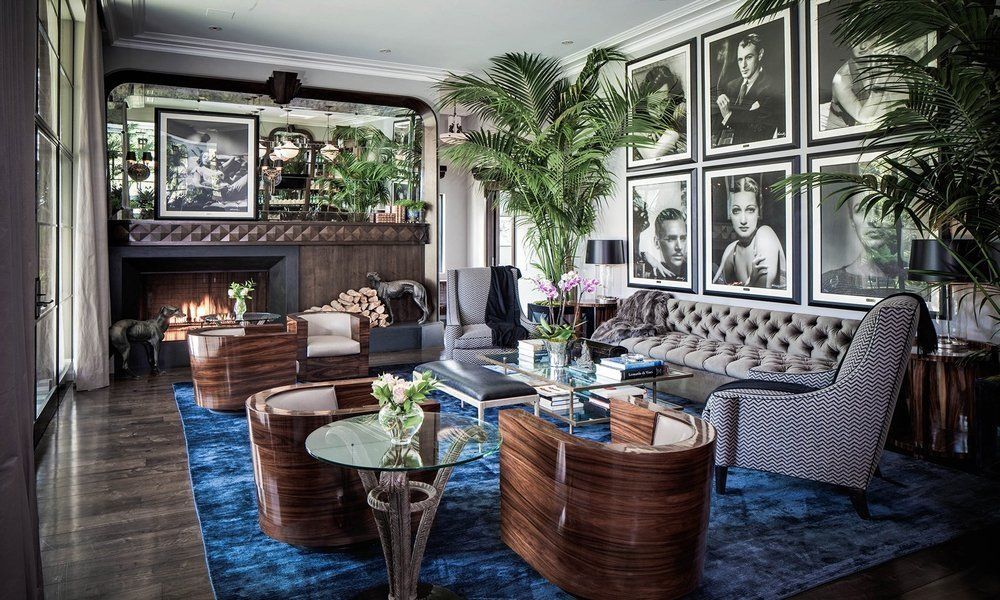Vintage Decor Is Making A Comeback
Home furnishing trends evolve quickly, making it challenging for homeowners to keep up with what’s “in” and “out” at any given time. The desire to stay current can be both time-consuming and costly.
The terms “classic” and “timeless” are often used to describe design and architecture, but they can be vague and difficult to define. These concepts are frequently overused, leaving homeowners unsure of how to blend old and new styles. Currently, the popularity of vintage style – a fusion of past influences with modern updates – offers a solution to this dilemma.
A glance at recent home decor magazines reveals how past styles influence current design. Antiques, like grandfather clocks, armoires (large cupboards used before built-in closets), and Hoosier cabinets (once used to store flour and sugar), are making a comeback in today’s homes.

The term “vintage” itself can be tricky to define. It stems from the Anglo-French word “vinter” and originally referred to wine. Merriam-Webster describes it as “of old, recognized, and enduring interest” and “dating from the past,” while Cambridge Dictionary suggests that for something to be considered vintage, it should strongly reflect the styles and trends of its era.
Today’s vintage style blends nostalgia with cultural heritage, but it has become diluted due to overuse in popular culture. “Vintage” can now apply to nearly anything that evokes older styles, making its meaning broad and subjective.
In contemporary interior design, five key historical periods are most commonly referenced:
- Art Deco

Originating in France during the 1920s and developing through the 1930s, Art Deco brought fluid, curving lines inspired by nature. Known for its elegance and sophistication, this style influenced fashion, jewelry, furniture, and architecture, including the iconic Chrysler Building in New York City. - Hollywood Regency

Hollywood Regency emerged in California during the 1930s, influenced by the glamor of Hollywood’s Golden Age. It emphasized opulence, with dramatic mirrors, animal prints, exotic florals, and lavish crystal chandeliers. This flashy style contrasted with Art Deco’s sleekness and remains evident in spaces like apartment lobbies with black and white checkerboard floors. - Midcentury Modern

Beginning in the 1940s and lasting through the 1970s, Midcentury Modern (also known as “retro”) embraced post-WWII materials like glass, aluminum, and plastic. Designs focused on sleek, functional, and modern forms, often with abstract shapes such as the famous Boomerang Pattern from the 1950s. This style has seen a resurgence in recent years. - The Natural Movement

In the 1970s, environmentalism influenced design, with an emphasis on natural materials like wood, stone, and fur. This period, shaped by the energy crisis, introduced warm earth tones in decor and saw rough-hewn timber beams and wood stoves become popular in homes. It reflected a desire to return to a simpler, more sustainable way of living. - Farmhouse Style

Today, farmhouse style has become a dominant trend. Drawing from vintage and antique furniture, materials, and accents common in rural America in the late 1800s, it embraces the warmth and simplicity of country life. Popularized by TV stars like Joanna Gaines of Fixer Upper, this style blends old-world charm with modern updates, bringing the comfort of the past into the present.
The Comfort of Nostalgia
Designing a home based on past styles offers comfort and stability in a world that often feels unpredictable. Our desire to refresh our living spaces can stem from a need to embrace newness and redefine ourselves. Yet, decorating with vintage influences can provide reassurance and a sense of control over our environment. Whether it’s the nostalgic pull of a particular era or the simple joy of surrounding ourselves with familiar, timeless elements, a vintage-inspired home allows us to feel connected to history while living in the present.